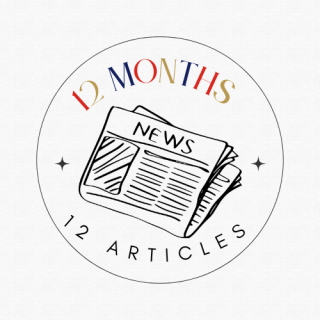
Plagiarism : What You Need to Know - Issue 2
12 Months 12 Articles

An article dedicated to explaining what plagiarism entails, how to avoid it, and the consequences of academic dishonesty.
As students we have all heard one of the most dreaded words that start with a p… plagiarism. But what does plagiarism actually mean? Why are we constantly reminded of it and why is it such a big deal? Luckily for you the University wrote the Plagiarism Prevention Policy which serves in simple terms as a study guide on plagiarism. But I know most students dodge the infamous study guides until it is “save the semester.” Therefore, I’ve read the Policy and will provide you with a YouTube short on the contents of the document.
Plagiarism is defined as follows:
“is the presentation of someone else’s work, words, images, ideas, opinions, discoveries, artwork, music, recordings or computer-generated work (including circuitry, computer programs or software, websites, the Internet or other electronic resources) whether published or not, as one’s own work, or alternatively appropriating the work, words, images, ideas, opinions, discoveries, artwork, music, recordings or computer-generated work (including circuitry, computer programs or software, websites, the Internet or other electronic resource) of others, without properly acknowledging the source.”
So in a nutshell, plagiarism happens when you make use of another person’s work and pass it off as your own. Technically when you do commit plagiarism, you are guilty of intellectual theft. This is the reason why plagiarism is such a big deal. Just imagine you have worked on a project for countless hours, researching, planning, drafting only to find out that someone copied your work and didn’t even put in half the time you did. Therefore, the University has implemented preventative mechanisms to ensure students are aware of plagiarism. The scary part is that you haven’t picked up on these mechanisms. But there is no need to panic, there are a few mechanisms, and I will briefly explain what they entail.
- Academic Information Management also known as AIM – This module is prescribed for all first-years, and the aim (pun intended) is to equip students with information literacy and refencing techniques – therefore by educating students on the proper method to tackle their assessments will ensure they know exactly what to do and plagiarism wouldn’t even be considered.
- Research Methodology Courses – Each faculty has its own courses specifically designed for the field of study. Therefore, the methods and techniques used are designed to assist students will the collection, organization and drafting of research papers in their respective faculties.
- Warnings against Plagiarism – In the infamous study guide there’s a section on plagiarism which serves as a warning to guard against plagiarism accompanied by a link to the Library Services’ Plagiarism Prevention Page.
- Assignment Briefing Sheets – According to the Plagiarism Policy each assessment you receive must contain a warning against plagiarism.
- Declaration of Originality to Accompany each Assignment – Remember how many times your lecture reminded you of your declaration. The reason is to ensure that the information you submitted is your own and that you acknowledged the sources you used in your assessment.
- Other – There’s awareness campaigns, specifically during welcoming week for first years. Library Services have courses or library training available to teach students the necessary writing and citing skills. Lastly, Turnitin is an electronic similarity detection software tool tasked with detecting potential plagiarism. This program generates an “originality report” indicating the similarity between all submitted documents.
According to the Policy, the University deals with plagiarism in a fair, transparent and consistent manner. Meaning each case of plagiarism is dealt with on its own. When you are suspected of plagiarism, you will receive written communication from your lecture. Then you will be given the opportunity to explain yourself. Should you admit guilt, the lecturer must suggest a penalty in terms of the Plagiarism Penalty Scale (the table serves as a blueprint for establishing the appropriate penalty for the plagiarism committed), and it will be recorded in the Plagiarism Register (this Register monitors students guilty of plagiarism and ensure the penalties fit the crime). However, in cases where you do not admit guilt to plagiarism, a disciplinary investigation will be conducted depending on the degree of seriousness.
In conclusion, plagiarism is not worth risking your entire academic future at the University or potentially other learning institutions. Should you have any questions or concerns regarding plagiarism, it is always better to reach out and ask for assistance. Rather than getting caught for intellectual theft of another person’s work.
- Author: Delia Möller
The news articles on the website merely serves as a source of information regarding our services.
Unsubscribe: [email protected]